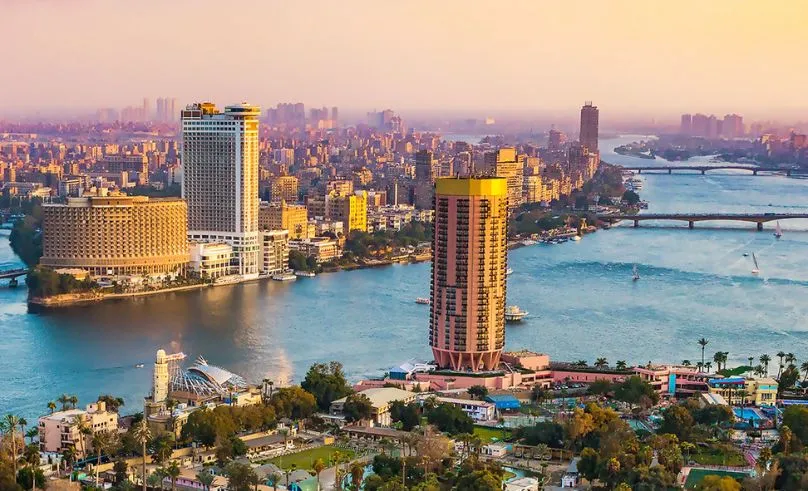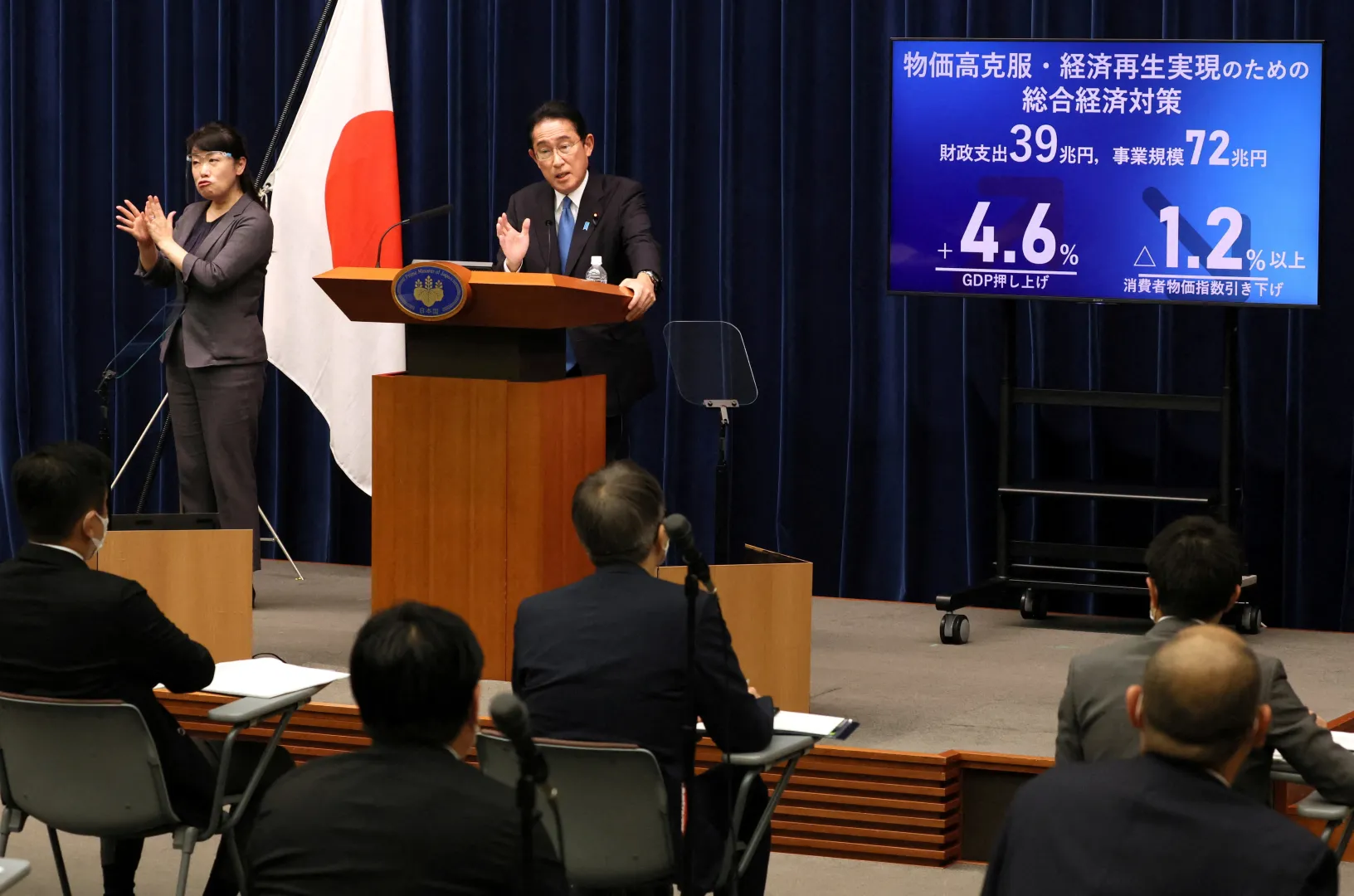In a strategic move to alleviate its burgeoning debt burden and unlock crucial development financing, Egypt has successfully secured over $900 million in debt swap agreements with key international partners, including Germany, Italy, and, for the first time, China. This proactive approach, announced by Egypt’s Minister of Planning, Economic Development, and International Cooperation, Rania Al-Mashat, at the Fourth International Conference on Financing for Development (FfD4) in Spain, positions Cairo as a leading voice in the growing global chorus for a fundamental reform of the international financial system.
The timing of these deals is critical. Low- and middle-income countries (LMICs) worldwide are grappling with an alarming surge in external debt, which reached a record $8.8 trillion in 2023. Consequently, the cost of servicing this debt has skyrocketed to $1.4 trillion, nearly double what it was a decade ago. As Minister Al-Mashat starkly warned, “Over 60 percent of low-income countries are now in or near debt distress,” a situation that, without immediate policy shifts, could see global public debt surpass 100 percent of GDP by 2030. Egypt’s innovative strategy not only offers a lifeline for its own development goals but also presents a potential blueprint for other African and developing nations seeking relief from unsustainable debt while pursuing long-term growth and resilience against mounting global challenges.
This article delves into the mechanics of debt swaps, the specifics of Egypt’s landmark agreements, the dire state of global debt, and Egypt’s impassioned call for a more equitable and responsive international financial architecture.
Egypt’s Strategic Gambit: Debt Swaps as a Solution
Egypt’s recent success in securing over $900 million in debt swap deals is a testament to its proactive and innovative approach to financial management. These agreements represent a sophisticated financial instrument designed to simultaneously reduce a country’s external debt obligations and channel funds towards critical domestic development projects.
What Are Debt Swaps?
A debt swap, or debt-for-development swap, is an agreement where a creditor country or institution agrees to forgive a portion of a debtor country’s outstanding debt in exchange for the debtor country committing to invest an agreed-upon amount of local currency into specific development programs or projects. In essence, money that would have been used for debt repayment is redirected to fund national priorities.
There are several variations of debt swaps, but the core principle remains:
- Debt-for-Nature Swaps: Funds are allocated to environmental conservation, such as forest protection, biodiversity preservation, or climate change adaptation.
- Debt-for-Development Swaps: Funds are directed towards social programs (education, healthcare), infrastructure, or other development initiatives.
- Debt-for-Climate Swaps: A growing category where funds are specifically earmarked for climate action, including mitigation and adaptation projects.
The appeal of debt swaps lies in their dual benefit: they provide debt relief to the borrowing country, freeing up fiscal space, while simultaneously ensuring that the “saved” funds are invested in areas crucial for sustainable development. For the creditor, it can offer a way to reduce non-performing loans, strengthen bilateral relations, and support global development goals without direct financial outlay beyond the initial debt forgiveness.
Egypt’s Landmark Deals: Germany, Italy, and China
Minister Rania Al-Mashat confirmed debt swap deals worth over $900 million with Germany and Italy, alongside a pioneering agreement with China. While specific project details for these latest deals are often subject to ongoing negotiations and internal government processes, past debt swap agreements provide insight into their potential impact:
- Germany: Germany has been a long-standing partner in debt-for-development initiatives with Egypt. Previous deals have often focused on sectors like education, renewable energy, and water management. For instance, a Germany-Egypt debt swap signed in 2011 aimed to support projects in education and vocational training. These partnerships align with Germany’s commitment to sustainable development and climate action in developing countries.
- Italy: Italy has also engaged in debt swap programs with Egypt, typically targeting social development and infrastructure projects. These agreements often reflect Italy’s broader foreign policy objectives of fostering stability and economic growth in the Mediterranean region.
- China: The debt swap agreement with China is particularly significant, as it marks a “pioneering” partnership in this specific financial instrument. China has become a major creditor to many developing nations, including those in Africa, through its Belt and Road Initiative. While China has engaged in debt restructuring and some forms of relief, formalized debt swaps for development purposes are less common compared to traditional Western creditors. This deal could signify a new dimension in China’s approach to debt management with its partners, potentially opening doors for similar agreements with other African nations. For Egypt, it offers a crucial avenue to diversify its debt relief sources and strengthen economic ties with its largest trading partner. The funds from these swaps are explicitly intended to ease Egypt’s financial pressures and directly support its development goals, which likely include investments in human capital, green projects, and critical infrastructure.
These deals underscore Egypt’s proactive stance in managing its financial obligations and leveraging international partnerships to secure resources for its national development agenda.
The Alarming Global Debt Crisis: A Context for Egypt’s Action
Egypt’s strategic use of debt swaps is set against the backdrop of a rapidly worsening global debt crisis, particularly impacting low- and middle-income countries. The figures presented by Minister Al-Mashat at FfD4 paint a grim picture of escalating financial vulnerability.
Soaring Debt Burdens
Al-Mashat revealed that the external debt of low- and middle-income countries surged to a record $8.8 trillion as of 2023. This staggering figure represents a significant increase, reflecting years of accumulating debt. Even more alarming is the corresponding rise in debt servicing costs, which have reached $1.4 trillion, almost double what they were a decade ago. This means a larger portion of these countries’ national budgets is being diverted from essential public services like healthcare, education, and infrastructure investment towards simply repaying creditors.
The Minister’s warning that “Over 60 percent of low-income countries are now in or near debt distress” highlights the pervasive nature of this crisis. Debt distress occurs when a country is unable to fulfill its financial obligations or is at high risk of doing so, without rescheduling or accumulating arrears. This can lead to defaults, credit rating downgrades, reduced access to international capital markets, and ultimately, economic instability and a reversal of development gains.
Causes of the Debt Surge
Several interconnected factors have contributed to this alarming rise in global debt:
- Global Shocks:
- COVID-19 Pandemic: The pandemic necessitated massive government spending on healthcare, social safety nets, and economic stimulus, while simultaneously disrupting economic activity and reducing revenue. Many developing countries had to borrow heavily to respond to the crisis.
- Russia-Ukraine War: The conflict triggered a surge in global commodity prices, particularly for food and energy. Net importers of these commodities, like many African nations, faced higher import bills, exacerbating their fiscal deficits and increasing their borrowing needs.
- Climate Shocks: Developing countries, especially in Africa, are disproportionately affected by climate change impacts (droughts, floods, extreme weather). These events cause significant economic damage, displace populations, and necessitate costly adaptation and recovery efforts, often financed through additional borrowing.
- Rising Global Interest Rates: In response to surging inflation, major central banks in developed economies (like the U.S. Federal Reserve and the European Central Bank) have significantly raised interest rates. This has increased the cost of borrowing for developing countries, particularly those with debt denominated in foreign currencies or those relying on commercial loans with variable interest rates. As interest rates rise globally, existing debt becomes more expensive to service, and new borrowing becomes less affordable.
- Currency Depreciation: Many developing countries have experienced significant depreciation of their local currencies against major international currencies like the U.S. dollar. Since a large portion of their external debt is denominated in foreign currencies, a weaker local currency means it takes more local currency to repay the same amount of foreign currency debt, effectively increasing the debt burden.
- Increased Reliance on Private Creditors: Over the past decade, there has been a shift from traditional concessional lending by multilateral institutions and bilateral donors towards commercial borrowing from private creditors (e.g., bondholders, commercial banks) and non-traditional bilateral creditors (e.g., China). While this diversification can be beneficial, private loans often come with higher interest rates, shorter maturities, and less transparency, making them harder to restructure during times of crisis. By 2023, 56 percent of external public debt was owed to private entities.
- Weak Governance and Fiscal Management: In some cases, internal factors such as inefficient public financial management, corruption, and unsustainable spending patterns have also contributed to debt accumulation.
Minister Al-Mashat’s stark warning that “without immediate policy shifts, global public debt could rise above 100 percent of GDP by 2030” underscores the urgency of the situation. This projection, supported by analyses from institutions like S&P Global, highlights the need for fundamental changes in how debt is managed and financed globally.
A Blueprint for Africa? Egypt’s Leadership in Financial Reform
Egypt’s proactive engagement in debt swaps and its advocacy for global financial system reform position it as a potential leader and blueprint for other African nations grappling with similar fiscal challenges.
Calls for Global Financial System Reform
The current debt crisis has intensified calls from developing countries and international organizations for a more adaptable, transparent, and equitable international financial architecture. Minister Al-Mashat’s proposals at FfD4 reflect these broader demands:
- More Adaptable and Transparent Financing Mechanisms: This calls for greater flexibility in lending terms, allowing countries to tailor financing to their specific development needs and economic conditions. Transparency in lending and borrowing practices, including full disclosure of loan terms and conditions, is crucial to prevent hidden debts and facilitate easier restructuring.
- Responsible Lending Standards: This advocates for creditors to assess a borrower’s debt sustainability and capacity to repay before extending loans, preventing countries from accumulating unsustainable debt. This includes considering a country’s long-term development goals and climate vulnerabilities in lending decisions.
- Automatic Suspension of Debt During Crises: This is a key proposal gaining traction. It suggests that debt service payments should be automatically paused during periods of severe crisis (e.g., natural disasters, pandemics, major economic shocks) to allow affected countries to redirect resources to emergency response and recovery. This would provide immediate fiscal space and prevent a liquidity crisis from spiraling into a solvency crisis.
- Global Platform for Sharing Expertise on Innovative Financing: A collaborative platform would allow countries to share best practices, technical knowledge, and successful models for innovative financing instruments like debt swaps, blended finance, and green bonds. This fosters South-South cooperation and accelerates the adoption of effective solutions.
- Scaling Up Special Drawing Rights (SDRs): Al-Mashat specifically pressed multilateral development banks (MDBs) to expand the use of SDRs. Special Drawing Rights (SDRs) are an international reserve asset created by the International Monetary Fund (IMF) to supplement its member countries’ official reserves. They are not a currency but a potential claim on the freely usable currencies of IMF members.
- How SDRs Help: SDR allocations provide unconditional liquidity, supplementing a country’s foreign exchange reserves without increasing its debt burden (countries only pay interest on SDRs they use, not the allocation itself). The $650 billion SDR allocation in 2021 during the COVID-19 pandemic demonstrated their power in providing rapid, low-cost financing. However, a significant portion of SDRs went to wealthier nations, prompting calls for re-channeling these unused SDRs to LMICs.
- Blended Finance: The Minister also emphasized the need to scale up blended finance. This approach uses public or philanthropic funds (concessional capital) to mobilize private sector investment in sustainable development projects that might otherwise be deemed too risky or not commercially viable.
- How Blended Finance Works: Concessional loans, guarantees, or first-loss capital from public sources absorb initial risks, making projects more attractive to private investors seeking market-rate returns. This can unlock significant private capital for large-scale projects in areas like renewable energy, sustainable agriculture, and climate resilience. Examples include Climate Investor One and various initiatives in Sub-Saharan Africa targeting financial services and energy.
- Liquidity Tools: Enhancing access to liquidity tools from MDBs and other financial institutions helps countries manage short-term financial pressures and avoid defaulting on debt.
The African Debt Narrative
The debt crisis is particularly acute in Africa. While the continent holds only about 7% of LMICs’ total external debt, it faces the highest vulnerability, with debt growing faster than GDP in many countries. African governments are now spending more on external debt servicing than on social services, with repayments consuming around 14 percent of national budgets. Public debt in Africa is projected to reach $1.9 trillion by 2024, with external debt servicing hitting a record high of $89.4 billion this year.
This situation is exacerbated by:
- Climate Shocks: African nations are highly vulnerable to climate change, which disrupts agriculture, infrastructure, and livelihoods, necessitating costly adaptation and recovery efforts.
- Currency Depreciation: Weakening local currencies against the U.S. dollar make foreign currency-denominated debt more expensive.
- External Borrowing Costs: Rising global interest rates and a shift towards more expensive commercial loans have increased the burden of debt servicing.
Egypt’s approach, therefore, could serve as a vital blueprint for other African nations. By demonstrating the efficacy of debt swaps, advocating for systemic reforms, and strategically leveraging international partnerships, Cairo is showing a path towards greater financial resilience and sustainable development on the continent. The success of Egypt’s model could inspire a collective push for a more equitable global financial system that better supports the development aspirations of African nations.
Navigating the Complexities: Challenges and Opportunities of Debt Swaps
While debt swaps offer a promising avenue for debt relief and development financing, their implementation is not without complexities and challenges.
Opportunities and Benefits
- Debt Relief and Fiscal Space: The most immediate benefit is the reduction of a country’s external debt stock and the freeing up of funds that would otherwise be used for debt service. This creates crucial fiscal space for governments to invest in priority sectors.
- Targeted Development Funding: Debt swaps ensure that the “saved” funds are explicitly earmarked for specific development or climate projects, promoting accountability and direct impact. This can lead to tangible improvements in areas like education, health, environmental protection, or renewable energy.
- Improved Bilateral Relations: Engaging in debt swaps can strengthen diplomatic and economic ties between the debtor and creditor nations, fostering goodwill and future cooperation.
- Environmental and Social Impact: Debt-for-nature or debt-for-climate swaps directly contribute to global environmental goals, helping countries meet their climate commitments and protect critical ecosystems. Debt-for-development swaps can improve human well-being and reduce poverty.
- Catalytic Effect: Successful debt swaps can signal a country’s commitment to reform and sustainable development, potentially attracting further foreign investment and concessional financing.
Challenges and Limitations
- Limited Scale: While significant for individual countries, debt swaps typically involve relatively small amounts compared to a country’s total debt burden. They are often seen as a supplementary tool rather than a comprehensive solution for countries facing unsustainable debt levels, which may require broader debt restructuring or forgiveness.
- Complexity and Transaction Costs: Negotiating and implementing debt swap agreements can be complex, involving multiple stakeholders (governments, central banks, development agencies, NGOs). This complexity can lead to high transaction costs and lengthy negotiation periods.
- Governance and Transparency: Ensuring that the funds freed up by a debt swap are genuinely used for the agreed-upon development projects requires robust governance mechanisms, transparency, and effective monitoring to prevent misuse or diversion of funds.
- Additionality: A key concern is “additionality” – ensuring that the projects funded through a debt swap would not have been undertaken anyway. The goal is to generate new funding for new initiatives, not just re-label existing spending.
- Moral Hazard: Some critics argue that debt relief, even through swaps, could create a “moral hazard” by encouraging irresponsible borrowing in the future, although this is often mitigated by conditionalities and commitments to fiscal discipline.
- Creditor Coordination: When a country has multiple creditors, coordinating debt swap agreements can be challenging, as each creditor may have different priorities and legal frameworks. The rise of diverse creditors, including private bondholders and non-traditional lenders, complicates comprehensive debt resolution.
Despite these challenges, Egypt’s proactive strategy demonstrates a pragmatic approach to leveraging available financial tools. By focusing on specific, impactful projects and advocating for broader systemic reforms, Cairo is attempting to maximize the benefits of debt swaps while addressing the underlying issues of global financial inequality.
The Road Ahead: FfD4 and the Future of Global Finance
Minister Al-Mashat’s announcement at the Fourth International Conference on Financing for Development (FfD4) in Seville, Spain (June 30 – July 3, 2025), provided a crucial platform for Egypt to articulate its vision for global financial reform. The conference itself was designed to bring together global leaders to address urgent financing challenges threatening the achievement of the Sustainable Development Goals (SDGs) by 2030.
FfD4’s objectives included:
- Unlocking greater volumes of capital for development.
- Reforming the international financial architecture.
- Strengthening international cooperation, especially to support developing countries.
The discussions at FfD4 underscored a growing consensus that the current global financial system, largely designed in the mid-20th century, is no longer fit for purpose in addressing 21st-century challenges like climate change, pandemics, and persistent debt crises. There is a broad recognition that a more resilient, equitable, and sustainable financing framework is needed.
Egypt’s proposals, particularly on responsible lending, automatic debt suspension, and scaling up instruments like SDRs and blended finance, align directly with the reform agenda being championed by various international bodies, including the UN Secretary-General’s Expert Group on Debt and the Heads of Multilateral Development Banks (MDBs). MDBs themselves are undergoing reforms to increase their lending capacity and better mobilize private capital for development and climate action.
The ongoing dialogue at such high-level forums is crucial. While immediate solutions are often incremental, these discussions build political will and foster consensus for the systemic changes required to prevent future debt crises and ensure that developing countries have the financial resources needed to achieve their development and climate objectives.
Conclusion: Rewriting Africa’s Debt Narrative
Egypt’s successful debt swap deals with Germany, Italy, and China, totaling over $900 million, represent a significant achievement in its efforts to manage its financial pressures and accelerate development. More importantly, Cairo’s assertive advocacy for global financial system reform at the FfD4 conference positions it as a leading voice for the developing world.
The alarming figures presented by Minister Al-Mashat regarding external debt and debt servicing costs for low- and middle-income countries highlight a pervasive crisis that threatens to derail global development goals. Egypt’s proposed solutions—ranging from responsible lending standards and automatic debt suspension during crises to scaling up SDRs and blended finance—offer concrete pathways towards a more resilient and equitable financial future.
For many African nations, whose economies are stretched thin by climate shocks, currency depreciation, and soaring borrowing costs, Egypt’s approach could indeed serve as a vital blueprint. It underscores the potential of innovation, strategic partnerships, and collective advocacy in rewriting Africa’s debt narrative. As global financial talks continue, Cairo’s bold strategy is a powerful reminder that with political will and collaborative effort, it is possible to transform financial challenges into opportunities for sustainable growth and shared prosperity. The world watches as Egypt champions a new era of financial diplomacy, aiming not just for its own relief, but for a fundamental shift in how the global economy supports its most vulnerable members.
Ready to take your career to the next level? Join our dynamic courses: ACCA, HESI A2, ATI TEAS 7 , HESI EXIT , NCLEX – RN and NCLEX – PN, Financial Literacy!🌟 Dive into a world of opportunities and empower yourself for success. Explore more at Serrari Ed and start your exciting journey today! ✨
photo source: Google
By: Montel Kamau
Serrari Financial Analyst
7th July, 2025
Article, Financial and News Disclaimer
The Value of a Financial Advisor
While this article offers valuable insights, it is essential to recognize that personal finance can be highly complex and unique to each individual. A financial advisor provides professional expertise and personalized guidance to help you make well-informed decisions tailored to your specific circumstances and goals.
Beyond offering knowledge, a financial advisor serves as a trusted partner to help you stay disciplined, avoid common pitfalls, and remain focused on your long-term objectives. Their perspective and experience can complement your own efforts, enhancing your financial well-being and ensuring a more confident approach to managing your finances.
Disclaimer: This article is for informational purposes only and does not constitute financial advice. Readers are encouraged to consult a licensed financial advisor to obtain guidance specific to their financial situation.
Article and News Disclaimer
The information provided on www.serrarigroup.com is for general informational purposes only. While we strive to keep the information up to date and accurate, we make no representations or warranties of any kind, express or implied, about the completeness, accuracy, reliability, suitability, or availability with respect to the website or the information, products, services, or related graphics contained on the website for any purpose. Any reliance you place on such information is therefore strictly at your own risk.
www.serrarigroup.com is not responsible for any errors or omissions, or for the results obtained from the use of this information. All information on the website is provided on an as-is basis, with no guarantee of completeness, accuracy, timeliness, or of the results obtained from the use of this information, and without warranty of any kind, express or implied, including but not limited to warranties of performance, merchantability, and fitness for a particular purpose.
In no event will www.serrarigroup.com be liable to you or anyone else for any decision made or action taken in reliance on the information provided on the website or for any consequential, special, or similar damages, even if advised of the possibility of such damages.
The articles, news, and information presented on www.serrarigroup.com reflect the opinions of the respective authors and contributors and do not necessarily represent the views of the website or its management. Any views or opinions expressed are solely those of the individual authors and do not represent the website's views or opinions as a whole.
The content on www.serrarigroup.com may include links to external websites, which are provided for convenience and informational purposes only. We have no control over the nature, content, and availability of those sites. The inclusion of any links does not necessarily imply a recommendation or endorsement of the views expressed within them.
Every effort is made to keep the website up and running smoothly. However, www.serrarigroup.com takes no responsibility for, and will not be liable for, the website being temporarily unavailable due to technical issues beyond our control.
Please note that laws, regulations, and information can change rapidly, and we advise you to conduct further research and seek professional advice when necessary.
By using www.serrarigroup.com, you agree to this disclaimer and its terms. If you do not agree with this disclaimer, please do not use the website.
www.serrarigroup.com, reserves the right to update, modify, or remove any part of this disclaimer without prior notice. It is your responsibility to review this disclaimer periodically for changes.
Serrari Group 2025












